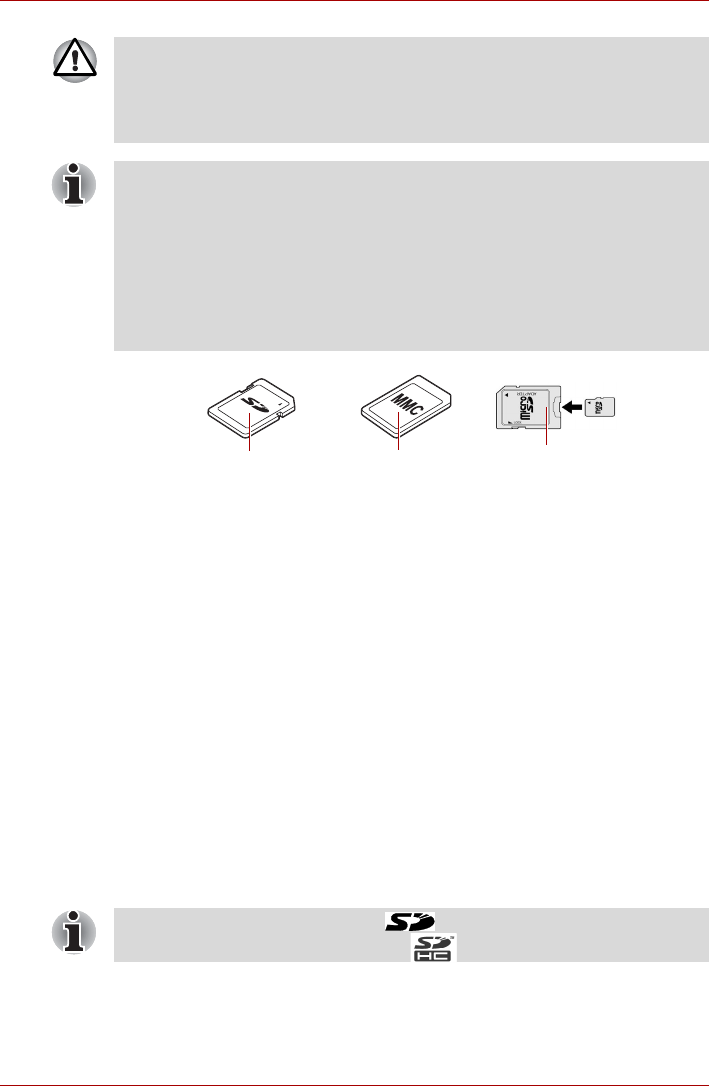
User’s Manual 8-2
Optional Devices
Examples of memory media
Memory media
This section provides the important safety precautions in order to handle
your memory media.
Points to note about the SD/SDHC memory card
SD/SDHC memory cards comply with SDMI (Secure Digital Music
Initiative), which is a technology adopted to prevent unlawful copy or
playback of digital music. For this reason, you cannot copy or playback
protected material on another computer or other device, and you may not
reproduce any copyrighted material except for your personal enjoyment.
Below is a simple explanation for distinguishing SD memory cards from
SDHC memory cards.
■ SD and SDHC memory cards appear the same externally.
■ The logo on SD and SDHC memory cards is different, so pay careful
attention to the logo when purchasing.
■ The maximum capacity of SD memory cards is 2GB. The maximum
capacity of SDHC memory cards is 16G.
■ Keep foreign objects out of the Bridge media slot. Never allow metal
objects, such as screws, staples and paper clips, to enter the computer
or Keyboard. Foreign metal objects can create a short circuit, which
can cause computer damage and fire, possibly resulting in serious
injury.
■ This Bridge media slot supports the following memory media.
■ Secure Digital (SD) Card (SD memory card, SDHC memory card,
miniSD Card, microSD Card).
■ MultiMediaCard (MMC)
■ To use a micro or mini SD card, an SD adaptor is required.
■ Please note that not all memory media have been tested and verified
to work correctly. Therefore, it is not possible to guarantee that all
memory media will operate properly.
Secure Digital
(SD) Card
MultiMediaCard
(MMC)
microSD card
and adaptor
■ The SD memory card logo is ( ).
■ The SDHC memory card logo is ( ).


















